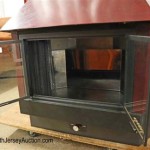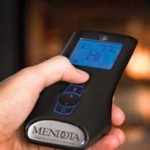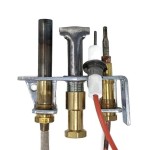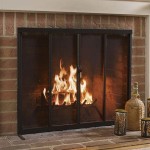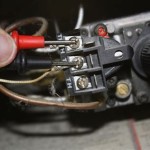Are Glass Fireplace Screens Safe? A Comprehensive Overview
The utilization of fireplaces as a source of supplemental heat and aesthetic ambiance remains prevalent in many homes. To ensure safe operation and prevent potential hazards, various accessories are employed, with glass fireplace screens being a common choice. The question of whether these screens are truly safe necessitates a thorough examination of their function, materials, potential risks, and proper usage.
Glass fireplace screens are designed primarily to contain sparks, embers, and potentially rolling logs within the firebox. This containment reduces the risk of fire spreading to the surrounding room, particularly flammable carpets, furniture, or curtains. Furthermore, the screen acts as a partial barrier, limiting direct contact with the open flame, which can be crucial in preventing burns, especially for children and pets. However, understanding the nuances of their safety profile is essential for responsible fireplace management.
Key Function: Spark and Ember Containment
The primary safety feature of a glass fireplace screen is its ability to contain sparks and embers. During combustion, burning wood releases small, hot particles that can be ejected from the firebox. These particles pose a significant fire hazard if they land on combustible materials within the room. A properly installed and maintained glass screen acts as a physical barrier, preventing these sparks and embers from escaping. The glass, which is typically tempered for higher heat resistance, provides a transparent viewport while effectively blocking the passage of potentially dangerous projectiles.
The effectiveness of this containment depends heavily on the integrity of the screen itself. Cracks, chips, or gaps in the glass or its frame can compromise its ability to prevent the escape of sparks and embers. Regular inspection for any signs of damage is therefore crucial. Furthermore, the screen should fit snugly against the fireplace opening, leaving no significant gaps through which embers could pass. The presence of a well-fitting and undamaged screen significantly reduces the risk of ignition outside the fireplace.
Beyond ember containment, a glass screen can also help to limit the spread of radiant heat. While fireplaces are designed to radiate heat into the room, excessive heat can be uncomfortable and, in extreme cases, pose a risk to nearby objects. The glass provides a degree of insulation, reducing the intensity of the radiant heat emanating from the fire. This is particularly beneficial in smaller rooms or in situations where individuals are seated close to the fireplace. The level of heat reduction will vary based on the thickness and type of glass used in the screen's construction.
Material Considerations: Tempering and Heat Resistance
The safety of a glass fireplace screen is intrinsically linked to the materials used in its construction, particularly the glass itself. Standard window glass is unsuitable for fireplace screens due to its low heat resistance. High temperatures can cause it to crack or shatter, rendering the screen ineffective and potentially creating a hazardous situation. Therefore, reputable glass fireplace screens are invariably constructed from tempered glass.
Tempered glass undergoes a specific heat treatment process that significantly increases its strength and heat resistance. This process involves heating the glass to a high temperature and then rapidly cooling it. This creates a compressive stress on the surface of the glass, making it much more resistant to impact and thermal stress. Tempered glass can withstand significantly higher temperatures than standard glass without cracking or shattering. In the event that tempered glass does break, it shatters into small, relatively harmless pieces rather than sharp, jagged shards, further enhancing its safety profile. Fireplace screens should be clearly labeled as using tempered glass to ensure compliance with safety standards.
The frame surrounding the glass is also a critical safety component. It should be constructed from a durable, non-combustible material such as steel or cast iron. The frame provides structural support for the glass and ensures that it remains securely in place. A poorly constructed or flimsy frame can warp or buckle under heat, potentially causing the glass to crack or even dislodge. Regular inspection of the frame for signs of rust, corrosion, or damage is essential to maintain the screen's structural integrity.
In addition to tempered glass and a robust frame, some high-quality fireplace screens also incorporate wire mesh behind the glass. This mesh provides an additional layer of protection against sparks and embers, further reducing the risk of fire spread. It also reinforces the glass, making it more resistant to impact. The mesh is typically made from a non-combustible material such as stainless steel, ensuring that it will not contribute to the fire hazard.
Potential Risks and Mitigation Strategies
While glass fireplace screens offer significant safety benefits, they are not without potential risks. One of the most common concerns is overheating. While tempered glass is designed to withstand high temperatures, excessive or prolonged exposure to intense heat can still cause it to crack or even shatter. This is particularly true if the fireplace is used excessively or if the fire is built too large.
To mitigate the risk of overheating, it is important to follow the manufacturer's instructions for fireplace use. This includes limiting the size of the fire, ensuring adequate ventilation, and avoiding the use of accelerants. Regular cleaning of the fireplace and chimney is also essential to prevent the buildup of creosote, a highly flammable substance that can increase the intensity of the fire. Furthermore, the screen itself should be kept clean to allow for adequate heat dissipation. Dust and soot can act as insulators, trapping heat and potentially leading to overheating.
Another potential risk is the potential for burns. While the glass screen provides a partial barrier, it can still become extremely hot during use. Direct contact with the hot glass can cause serious burns. It is therefore important to keep children and pets away from the fireplace while it is in use. Even after the fire has died down, the glass can remain hot for a considerable period of time. A safety gate or barrier can be used to prevent accidental contact with the hot screen.
Improper cleaning of the glass can also pose a risk. Abrasive cleaners or harsh chemicals can scratch or damage the glass, weakening its structural integrity and making it more susceptible to cracking. Only use cleaning products specifically designed for tempered glass. Allow the screen to cool completely before cleaning. Never spray cleaner directly onto a hot screen, as this can cause it to crack or shatter. A soft cloth and mild detergent are typically sufficient for removing soot and grime.
Finally, improper installation or use of the screen can also create a safety hazard. The screen should fit snugly against the fireplace opening, with no significant gaps through which sparks or embers could escape. The screen should be properly secured to the fireplace, preventing it from tipping or falling over. Never use a damaged or cracked screen, as this can compromise its ability to contain sparks and embers. Regular inspection and maintenance are essential to ensure that the screen remains in good working condition.

Hot Glass Safety Screen Pilgrim Home Hearth

Fireplace Glass Doors Vs Screens Full Service Chimney

Why You Should Have A Fireplace Screen In Your Home

S Glass Safety Burns Hot Fireplaces Stoves

Fireplace Glass Doors Vs Screens Full Service Chimney

Fireplace And Stove Glass Safety Tophat Pro

Glass Door Fireplace Safety Children S Hospital Colorado

Fireplace Doors Are Safer And More Efficent Than Screens

Fireplace And Stove Glass Safety

Should I Replace My Fireplace Screen With A Glass Door Or Another

